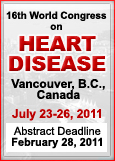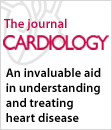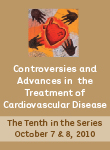|




| |
Air pollution,
even at “safe” levels, is bad for the heart |
November 11, 2003
ORLANDO, FL (AHA)
–
Urban air pollution is linked to increased rates of death from
cardiovascular disease, according to a study presented at the
American Heart Association’s Scientific Sessions 2003.
“Chronic exposure to air pollution has been associated with
various health-related illnesses, however few studies have
related air pollution to cardiovascular disease,” said lead
author Demosthenes B. Panagiotakos, Ph.D., a biostatistician and
epidemiologist at the First Cardiology Clinic at the University
of Athens School of Medicine in Athens, Greece.
The researchers conducted the study in the greater Athens
area from 1992 to 1997. They collected daily values of primary
air pollutants – smoke, sulfur dioxide, nitrogen dioxide and
carbon monoxide – from eight stations of the Ministry of
Environment (Directorate of Air and Noise Pollution Control).
They also collected data about the number of deaths due to heart
disease and stroke.
They found a significant positive association between
cardiovascular disease (CVD) deaths and several air pollutants.
In particular, for every 10 micrograms per cubic meter (mg/m3)
increase in black smoke, they observed a 4 percent increase of
CVD deaths. Similarly, a 10-mg/m3 increase in sulfur
dioxide was associated with a 5 percent increase of CVD deaths.
“The most important finding is that a 10-unit increase in
carbon monoxide (CO) was associated with a 46 percent increase
in CVD deaths,” Panagiotakos said.
On further analysis, the researchers found that the average
number of CVD deaths in the Athens area during the study period
was 35 deaths each day.
Panagiotakos said the increase of 1-unit in CO levels might
lead to two more deaths each day or more than 700 a year. In
addition, CO levels roughly explained 3 percent of the observed
CVD deaths during the investigated period.
The researchers said the values of the investigated air
pollutants reached very high levels many times during the past
decade. They attribute this to a rapid increase in population,
especially since the 1950s, and the dramatic rise in motor
vehicles and industries.
“Athens’ greater area has more than 4.5 million inhabitants.
Four-fifths of the population live in the urban center and
one-fifth live in rural areas of the Attica region,”
Panagiotakos said.
He noted that his findings are consistent with results of
other studies in Europe and the United States. It is well known
that air pollution such as dust; gases and smoke are mainly
generated by human activities. He added that changes in
automobile emissions technology beginning in the late 1990s have
helped to improve air quality in Athens.
“Our findings about CO are important because levels of CO are
a very good indicator of primary pollution. In Athens, as well
as in many other cities, the basic pollution source is traffic,
and the most characteristic pollutant from traffic is CO,”
Panagiotakos said.
“During the past two decades, the average CO levels in the
Athens area varied from 1 to 6 milligrams per cubic meter (mg /m3);
however, CO values often exceeded the air quality standard of 10
mg /m3. The number of CVD deaths increased
substantially as a result.
“These health effects occur even at exposure levels below
those stipulated in current air-quality guidelines, and it is
unclear whether a safe threshold exists,” Panagiotakos said.
“It is essential that public health authorities take further
actions to reduce cardiovascular mortality in urban areas of the
world, especially on days with elevated levels of air
pollutants,” he added.
The seasonal variations of air pollutant concentrations are
at a minimum during the warm period and a maximum during the
cold period of the year because of the central heating
emissions, the increased traffic and industrial activities.
Co-authors are Christina Chrysohoou, M.D., Ph.D.; Panagiotis
Nastos, Ph.D.; Christos Pitsavos, M.D., Ph.D. and Christodoulos
Stefanadis, M.D., Ph.D. |
|
|
|